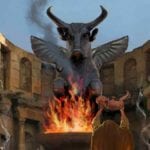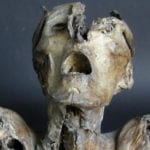 Weird Stuff
Weird Stuff  Weird Stuff
Weird Stuff  Our World
Our World 10 Ways Your Christmas Tree Is More Lit Than You Think
 Movies and TV
Movies and TV The 10 Coolest Stars to Set Sail on The Love Boat
 History
History 10 Things You Didn’t Know About the American National Anthem
 Technology
Technology Top 10 Everyday Tech Buzzwords That Hide a Darker Past
 Humans
Humans 10 Everyday Human Behaviors That Are Actually Survival Instincts
 Animals
Animals 10 Animals That Humiliated and Harmed Historical Leaders
 History
History 10 Most Influential Protests in Modern History
 Creepy
Creepy 10 More Representations of Death from Myth, Legend, and Folktale
 Technology
Technology 10 Scientific Breakthroughs of 2025 That’ll Change Everything
 Weird Stuff
Weird Stuff Ten Bizarre Facts About The Doge Meme
 Our World
Our World 10 Ways Your Christmas Tree Is More Lit Than You Think
 Movies and TV
Movies and TV The 10 Coolest Stars to Set Sail on The Love Boat
Who's Behind Listverse?

Jamie Frater
Head Editor
Jamie founded Listverse due to an insatiable desire to share fascinating, obscure, and bizarre facts. He has been a guest speaker on numerous national radio and television stations and is a five time published author.
More About Us History
History 10 Things You Didn’t Know About the American National Anthem
 Technology
Technology Top 10 Everyday Tech Buzzwords That Hide a Darker Past
 Humans
Humans 10 Everyday Human Behaviors That Are Actually Survival Instincts
 Animals
Animals 10 Animals That Humiliated and Harmed Historical Leaders
 History
History 10 Most Influential Protests in Modern History
 Creepy
Creepy 10 More Representations of Death from Myth, Legend, and Folktale
 Technology
Technology 10 Scientific Breakthroughs of 2025 That’ll Change Everything
10 Mysterious And Creepy Events On Mount Everest
Everest. Just say the name, and your mind is likely to conjure all sorts of images and tales from this beast of a mountain’s relatively short, yet utterly fascinating and often controversial, history. From the glorious first ascent of Sir Edmund Hillary and Tenzing Norgay to the tragic end met by so many of those who’ve sought to scale the planet’s highest peak, the narrative of “Chomolungma” is one packed with mystery and intrigue.
Not only has this 8,848-meter (29,029 ft) giant attracted some of the nuttiest, most impassioned, and daring adventurers the world has ever known (and perhaps even the odd ghost and Yeti) but it has also borne witness to some of the strangest, most inexplicable, and haunting events in mountaineering history. Below, we take you through ten of the most baffling and unexplained mysteries to have graced the planet’s loftiest peak since the first European expeditions there thrust the mountain into the international spotlight in the early 20th century.
10 The Man Who Tried To Climb Everest In High Heels
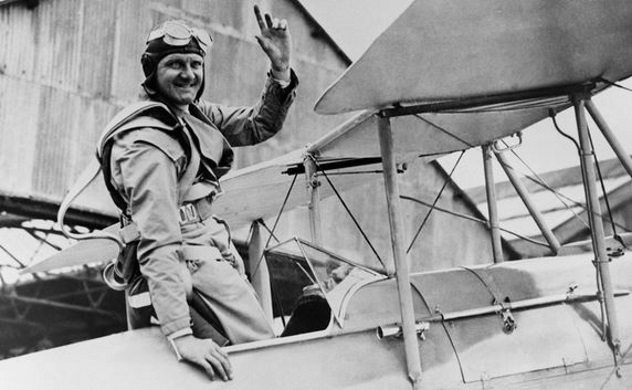
Everest has attracted many fanatics, eccentrics, and colorful characters over the years, but none have been quite so out there as Englishman Maurice Wilson. In 1933, Wilson hatched a plan to fly into the northern slopes of Everest, crash-land his plane, and then solo climb to the summit. He trained in Britain, hiking and learning to fly a Gypsy Moth plane before spending the winter in Darjeeling, where he prepared for his climb by fasting and praying, which he believed would be enough to see him to the peak.
Abandoning the plane idea when realizing his folly, Wilson set off on foot across the Rongbuk Glacier on May 22, 1934, but he was eventually blocked by an ice wall and, perhaps, his lack of any climbing equipment or experience whatsoever. His last diary entry was made on May 30, and his body found the following year, dressed—it is claimed—in women’s lingerie. Though this story was never corroborated, in 1960, a Chinese team found a woman’s high-heeled shoe near where Wilson perished, and it was later discovered that he had in fact been a cross-dresser, having worked in a women’s clothes store in New Zealand before becoming possessed by the Everest mania that would ultimately lead to his demise.[1]
9 The Yeti
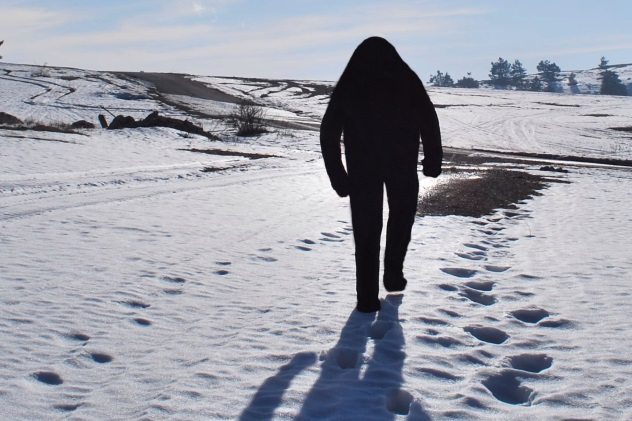
Many of the earliest recorded sightings of the Yeti derive from the Everest region, with the folklore of local Nepali and Tibetan tribes telling of a bipedal, hirsute, nocturnal creature living in their midst. In more recent times, various “sightings,” footprints and even DNA evidence have gone a long way toward substantiating the claims of the region’s storytellers. Notable examples include the enormous footprints found at 6,000 meters (20,000 ft) by Eric Shipton’s 1951 Everest expedition and the “Yeti scalp” contained in Khumjung’s monastery on Everest’s south side.
Arguably even more convincing are the findings of Joshua Gates and his Destination Truth team in 2009. The hair samples taken by Gates from a series of footprints measuring 33 centmeters (13 in) long and 25 centimeters (10 in) across were tested by a forensic analyst, who concluded that the sample contained an altogether and hitherto unknown DNA sequence.[2]
8 First Ascent 1: Mallory And Irvine?
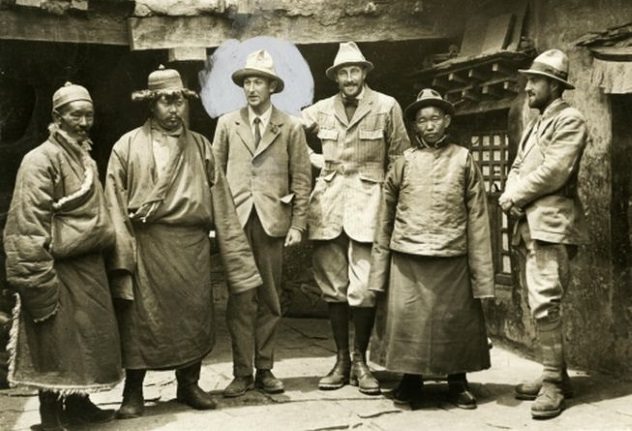
When Sir Edmund Hillary and Tenzing Norgay became the first to successfully summit Everest in 1953, many viewed the triumph with a degree of skepticism. In 1924, two Englishmen, Everest addict George Mallory (highlighted above) and his companion Sandy Irvine, were spotted through a telescope a mere 200 to 300 meters (650–1,000 ft) shy of the summit. Sadly, they never returned, leading to almost a century of speculation as to whether they actually were the first reach the top of the world or not.
In 1999, when Conrad Anker’s expedition to find Mallory’s body ended in success, the Englishman’s frozen remains bore no further clues. Most disappointingly, they found no sign of his camera, which they had hoped might put an end to the debate once and for all. For those who believe Mallory and Irvine were the first to summit Everest, however, the greatest evidence to support their claim lies in something else that wasn’t in Mallory’s possession when he was discovered by Anker’s team. Mallory had told his wife Ruth and also his climbing party that upon reaching the summit, he would place there a picture of his wife, which he had kept in his inside pocket throughout the expedition. When his body was discovered, the picture was missing.[3]
7 First Ascent 2: The Russians?
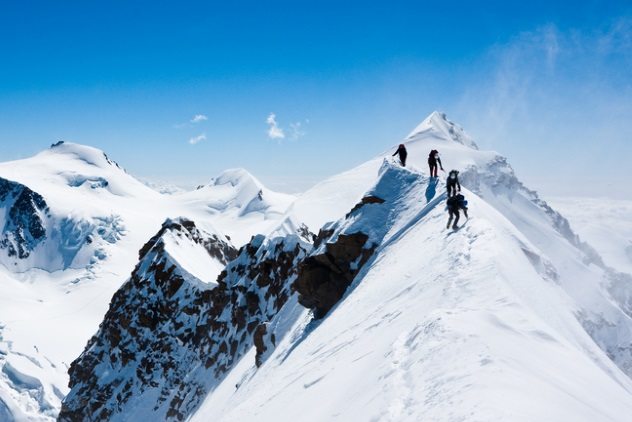
In 1952, still before Hillary and Tenzing’s famous ascent, a Russian expedition supposedly attempted to climb Everest by the north route in Tibet. News reports at the time even suggested that this optimistic bunch planned on mounting statues of Lenin and Stalin on the summit. The expedition made a final camp at around 8,000 meters (26,200 ft) in preparation for a summit bid, but they subsequently disappeared without a trace.
To cloud matters further, the Russians have always maintained that the 1952 expedition didn’t take place at all, despite a report by Yevgeniy Gippenreiter in the Alpine Journal later that year, stating that the team of 35 had set out to attempt the Northeast Ridge route. Also, on April 21, 1952, the Sydney Morning Herald speculated about the team’s prospects on the mountain. Despite numerous attempts, no trace of the team members’ or leaders’ names has been found.[4]
6 The Ghosts Of Everest
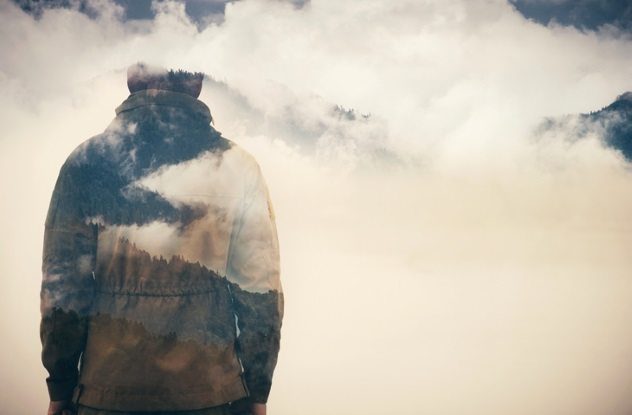
Record-holding Sherpa Pemba Dorje has become renowned in the climbing world for two reasons. First is his claimed record-speed ascent of Everest (eight hours, ten minutes) on May 21, 2004. Second are the events of three days later, May 24. While approaching the summit from the South Col, Dorje came across a group of deceased climbers whose bodies were frozen in the snow. Suddenly, he claims, he was surrounded by something of the supernatural variety. In his own words:
When I paused at a mound of rocks I saw some spirits in the form of black shadows coming towards me, stretching their hands and begging for something to eat. I think those were the spirits of the many mountaineers killed during and after their ascent of Mount Everest. The bodies of many of those who died are still on the mountain and one climber who died from an accidental fall is still hanging from a rope.[5]
Many Sherpas believe the ghosts of Everest will not be appeased or leave the mountain until the bodies of the deceased are given a proper burial. With so many corpses stuck in the “Death Zone” above 8,000 meters (26,200 ft) and more joining them each year, it’s unlikely that the mountain will be a ghost-free zone anytime soon.
5 The Third Person
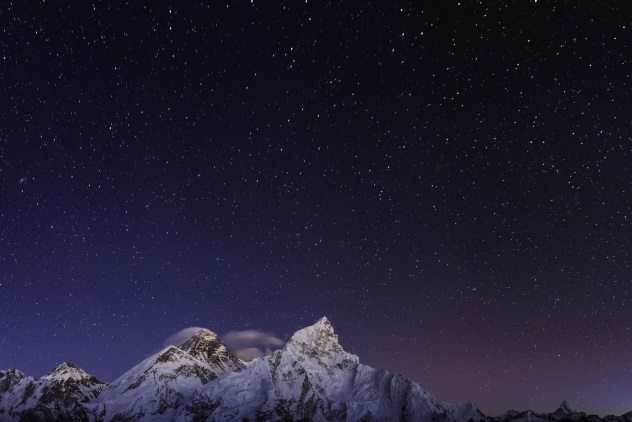
In September 1975, British mountaineers Dougal Haston and Doug Scott were forced to spend a night in the Death Zone after reaching Everest’s summit late in the day. They dug a snow hole and huddled in for the night, unsure if they would survive until morning. They soon ran out of oxygen. With no food and their butane heater nearing depletion, their situation was truly dire. Then, the inexplicable happened.
Both climbers reported feeling another presence in the snow cave with them, one which not only shared its vital body heat but also offered advice and suggestions to help the climbers stay warm and alive. Other Everest climbers, such as Peter Hillary, Lincoln Hall, and Reinhold Messner, to name a few, have reported a similar presence having come to their aid on the mountain in their time of need.[6]
4 Frank Smythe: Apparitions, Aliens, Or The Supernatural?
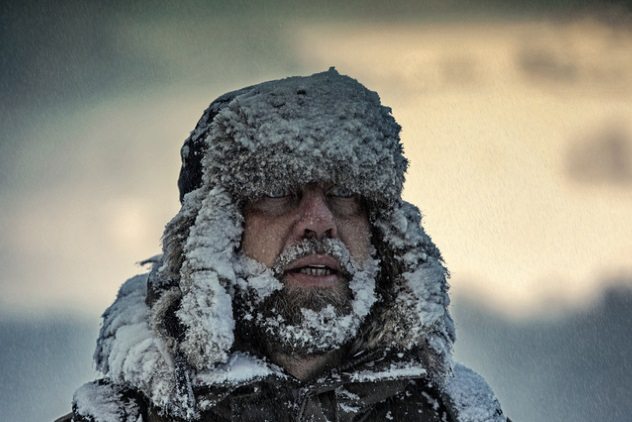
In 1933, while on his first attempt at Everest’s summit, English climber Frank Smythe was alone at 8,565 meters (28,100 ft) on Everest’s North Ridge when he witnessed:
. . . two curious objects floating in the sky . . . They strongly resembled kite balloons in shape, but one possessed what appeared to be squat, under-developed wings, and the other a protuberance suggestive of a beak. They hovered motionless but seemed slowly to pulsate, a pulsation incidentally much slower than my own hearts-beats . . .
Before this, Smythe claimed to have been visited by some unidentifiable force during his ascent and felt a strong presence beside him as he moved up the slopes. He even took a slice of Kendal mint cake from his pocket to share with this companion, having believed the invisible and immaterial entity to be entirely real. Spooky.[7]
3 Who Was Really First: Hillary Or Tenzing?
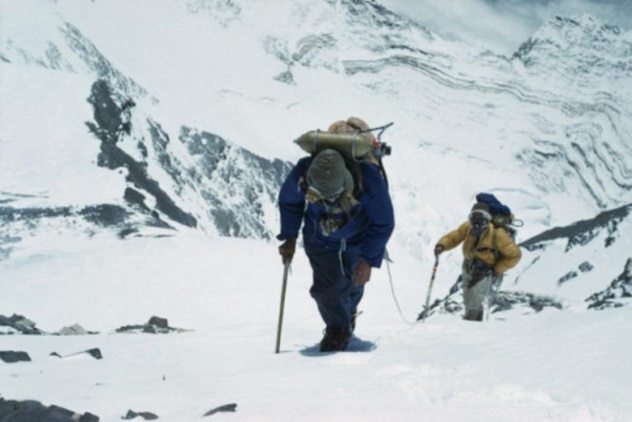
Supposing Mallory, Irvine, or even the Russians didn’t reach the top of the world before perishing, the question as to who did get to the summit first still isn’t entirely resolved. After their ascent, Sir Edmund Hillary and Sherpa Tenzing Norgay struck a gentlemanly pact to never reveal who really took the last step first, hoping to defuse the anti-imperialist sentiment then on the rise in Nepal and India by avoiding any suggestion that a Westerner had beaten one of their own to the summit of the world.
A poster that appeared in Kathmandu shortly after Hillary and Tenzing’s ascent, however, left little doubt as to who the Nepalis thought was first, depicting Hillary struggling up a rope some yards behind his climbing companion. Later, two of Tenzing’s sons would also reveal that their father had told them in private that it was he, not Hillary, who had summited first, despite both climbers having stuck to their agreement and maintaining publicly that they had reached the summit at exactly the same time.
Hillary himself appeared to put the matter to rest 17 years after Tenzing’s death in a 2003 interview with Scotland on Sunday when he said:
We set off at 6.30am, first light, me in the lead, Tenzing behind on a tight rope. We never discussed who would be first up. It really did not matter to me, as the entire expedition was very much a team affair, but I suspect Tenzing was quite deferential to what he saw as the Sahib. So I got to the top first, with him just 10ft or so behind.
Hillary’s claim was further corroborated by a memo later found in the archives of the Royal Geographical Society, in which he gave his account of the climb shortly after his and Tenzing’s descent: “I stepped on top of Everest . . . I quickly brought up Tensing [sic] beside me.”[8]
Tenzing was never given the chance to refute Hillary’s claim, but many still believe it was the Nepali, not the New Zealander, who was the first man to set foot on the top of the world.
2 Ueli Steck
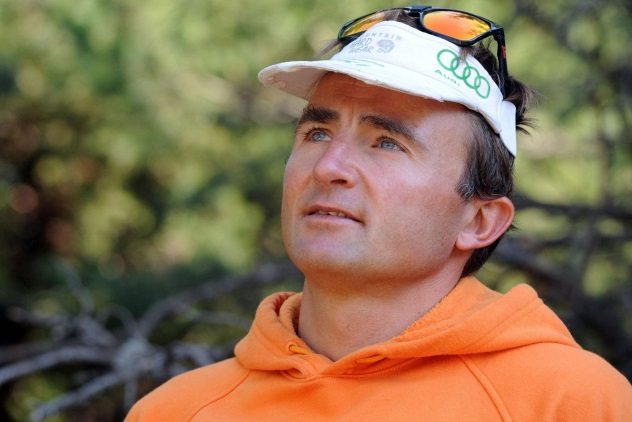
In April 2017, “The Swiss Machine” Ueli Steck died while preparing to climb the summits of Everest (by its infamous West Ridge) and Lhotse in one go—a feat never before accomplished. Steck was very much the Michael Jordan, Lionel Messi, Babe Ruth, or Usain Bolt of the mountaineering world, so his ambitious project was not viewed as excessively daring or risky by those who knew his ability and capacity for the remarkable. Steck had set speed records on the north face of the Eiger and the Annapurna’s south face and twice received the Piolet d’Or—mountaineering’s equivalent of a Nobel Prize—for a first ascent on Tengkampoche and his solo speed ascent on Annapurna.
He wasn’t just fast; Steck was also one of the most accomplished mountaineers of his, or any, generation and was famed for his technical ability, grace, and comfort on even the most absurdly difficult of routes. How then, did such an accomplished climber come to meet his end in the way he did? Steck fell on the Western Cwm, a route he had climbed before and which forms part of the standard “tourist” route to the top of Everest. While generally a challenging and fairly technical undertaking, to a climber of Steck’s ability, the ascent should have been no more than a formality and, indeed, the mere “training exercise” for his forthcoming Everest-Lhotse ascent that his climbing partner Tenji Sherpa later revealed it to be.
The incredulity with which Steck’s demise was met in the international climbing community bears testimony to both the skill of the man and the enduring enigma of the world’s highest mountain. Did he slip? Did the ice or snow give way? Did he succumb to altitude-related illness? Just how mountaineering’s most acclaimed star fell and plunged over 300 meters (1,000 ft) to his death that day will never be known for sure. As on many of the climbs he undertook in his career, owing to his partners’ inability to keep up with him, Steck was climbing alone at the time of his accident, with the nearest eyewitnesses to the fall over 1.6 kilometers (1 mi) away.[9]
1 The 2017 ‘Deaths’ That Never Were
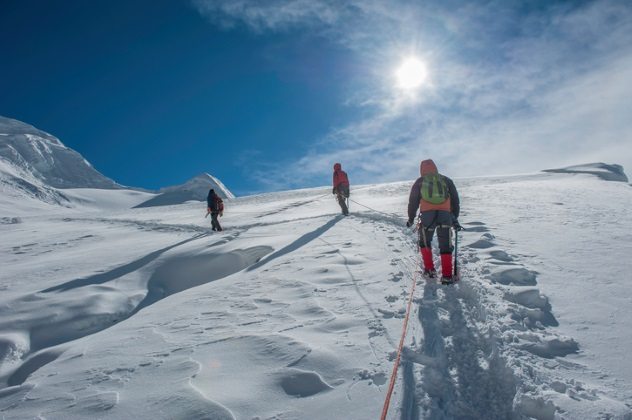
On May 22, 2017, reports reached Everest Base Camp of four corpses found in a tent at Camp Four (7,950 meters [26,082 ft] ). The ill-fated climbers were presumed to have died from altitude sickness and were discovered by a team sent up the mountain to retrieve the body of a Slovakian climber who had perished on his ascent three days earlier. When it later transpired that none of the climbing agencies on the mountain were missing any climbers—or at least had none that were unaccounted for—confusion arose as to who the four climbers might have been.
As news sources worldwide reported the tragedy, the Nepalese tourism ministry spoke out and revealed that they thought the bodies to be those of climbers from one of the previous year’s expeditions, only for matters to be further complicated when it was discovered that none of these had reported any unaccounted-for climbers, either. The case remains open and just another of the manifold mysteries to have befallen Earth’s highest and most mysterious mountain.[10]
Kieran James Cunningham is an author and freelance writer who lives in Sondrio, Italy.
His book Dave Nocture is available on Amazon.com.
Read more about Mount Everest on 10 Harrowing Stories Of Life And Death On Mount Everest and 10 Things You Might Not Know About Mount Everest.



